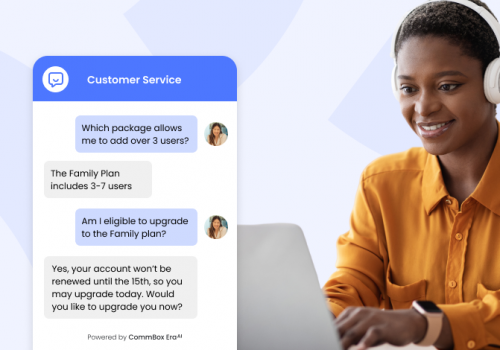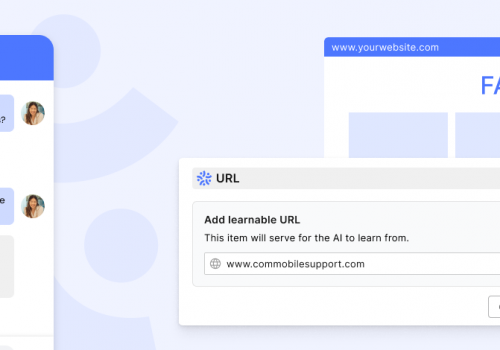SDR In A B2B SaaS Company. Sales Development Reps (SDRs) perform an essential function in B2B companies, and their numbers grow every year as this value is realized. SDRs help account executives close deals, move leads through the pipeline and nurture quality leads. SDRs are measured on their ability to execute these steps, but a lot of factors go into making you great at this role. Today we’re going to be looking at how you can crush it as an SDR and take your career to the next level.
7 Winning Tips You Can Use Today To Grow Your Sales Career
1. Picking the Right Company
This tip might not apply to everyone. If you’re already in an SDR role at a B2B company, then you’re beyond the point where you’re looking for the right company. However, even if this is you, this section will help you become a better SDR.
Why Picking the Right B2B Company is So Important?
- You’re going to be spending 40 to 60 hours a week living and breathing this product.
- Can you get excited about the product the B2B company sells?
- Do you understand the product, or do you think you can get to a place of understanding? If you can’t immediately see the value in a product, then being an SDR at that company probably isn’t a good idea.
When you’re looking for SDR roles, it’s easy to get intimidated by the job market and take the first role that comes your way. If you’re in a position where you need a job quickly, we won’t tell you to act otherwise. However, if this is a career move for you, we’d advise you to act with intention. Be deliberate about your decision. Remember, your time is valuable, and time is limited for everyone. If you spend one year selling at a company that isn’t a good fit for you, this could impact your career by holding you back for several years.
If you’ve already picked your company and are in an SDR role, focus on the bullet points above within your role. If you don’t understand everything about the product, then get yourself there. If you’re failing to see where the product has value, then work through some case studies and try to get to the bottom of why customers love the product. When you have a list in your head for all the reasons your product offers value, you have an answer to any question that comes your way.
2. Learn How to Earn Attention
Learning how to make an excellent first impression and secure a meeting is one of the most crucial steps to becoming a highly successful SDR. Here are some tips on how you can do this:
- Learn the lingo – If you work in a specific industry, for example, you sell medical products or accounting software, it’s vital that you learn the lingo. You need to use the same language that your prospects use if you want to seem trustworthy.
- Be accountable and reliable – To put it another way, always show up. Prospects are much more likely to agree to meetings and keep moving through the sales pipeline if they can count on you when they need you. This doesn’t mean you have to wake up at 3 am to answer emails. But it does mean that you need to decide on the hours you’ll always be available to talk and hold yourself to this standard. Set an expectation that you can be relied on.
- Don’t be needy or pushy – The hard truth here is that no one wants to give their attention to desperate people, at least when it comes to sales. You can’t command attention if you don’t seem in control of the situation. By being pushy, overly aggressive, or needy (begging for meetings), you automatically seem like the weaker party. You need something from them, so they have all
3. Don’t See The SDR Role as a Temporary One
Okay, we get it; you have ambitions for something bigger in the future. That’s normal, healthy, and totally expected. But if you’re always focused on what’s next, you’re not focusing on the now.
If you’re looking for SDR roles, be mindful that B2B companies are unlikely to hire someone if they think they’re going to leave in six months or a year. Companies want committed and loyal employees who love their roles. Why? Because when you love your job, you work harder and deliver better results. If you start from the mindset that this role is just a stepping stone for you, you’re probably not going to put your all into it. Sure, you might understand from a logical viewpoint that to move up, you need to prove your worth in your current role. But having an “I’m better than this” mindset going in will shape your behavior whether you want it to or not.
You need to treat this role as your forever role and put your all into being productive, passionate, and hungry for results. I know what you’re thinking, “what if I get overlooked for promotions?”. There are two things we’d say to that:
- If you’re excellent in a sales environment, the company will always want to put you where you have the most impact. If they think you can make even more money for them in a higher-ranking sales role, you will be given that role.
- Reflect intentionally. Instead of spending tons of energy reflecting on your position and where you want to be every day, set aside time to do this once a month, once every six months, or so on. This is what performance reviews are for. Performance reviews are your time to put your cards on the table, but you should be focusing on being the SDR possible when you’re at your desk.

4. Be Hungry to Learn
Being hungry to learn is about seeking out the right resources to make you better at your craft. You might be naturally talented as a salesperson, but there’s always more to learn. It’s the people who stop learning who get stuck – they never improve, and when they look back, everyone has moved past them. Don’t be one of those people.
So, what should you be doing to learn more?
Podcasts: For sales podcasts, check out Make it Happen Mondays, Sales Gravy, Sell or Die, B2B Growth, Move The Deal.
YouTube videos: Plenty of successful salespeople and business owners have their own YouTube channels where they share advice on becoming a better salesperson.
Books: There are plenty of great books on sales, business, and leadership out there. You should be able to find some lists online or by browsing Goodreads. As a general rule, if the book has a 4+/5 rating on Goodreads – just read it.
Blogs: If you’re not reading high-authority sales or SDR-focused blogs, then you should be. Blogs are a great way of getting digestible information quickly. You can also refer back to them at a moment’s notice.
Talk to People: Talk to the salespeople around you to find out what works for them and why.
Follow sales thought leaders on LinkedIn: Thought leaders come up with great ideas before anyone else. If you want to always be at the forefront of sales, you need to follow thought leaders.
Remember, the more you learn, the more you earn!
5. Ask For Feedback
Most new SDRs are afraid to ask for feedback. Asking for feedback can be scary because you don’t know what you’re going to get. Most people don’t ask for feedback because they worry that they won’t be able not to take it personally if they hear something negative.
If something isn’t working for you, like, for example, you’re not hitting your quota for scheduling meetings, ask for feedback. Be proactive about improving your technique and getting to the bottom of your weaknesses. We all have flaws, but when you find them, you can do better next time.
6. Learn How to Convey a Message Succinctly
Time is a precious commodity in the digital age, and your business clients don’t thank you for taking up too much of their time. To be an excellent SDR, you need to learn how you get your message across concisely. This means drilling into the product’s value as soon as possible, asking essential questions early on, and so on.
Some other tips to ensure you get your message across succinctly and don’t ramble:
- Lower your voice – Lawyers are told to lower their voice when they want to highlight specific points. It goes without saying that you shouldn’t be over the top about this. If you do it right, the client will hardly notice anything has changed.
- Pause if you need more time – Pausing for a second or two is better than rambling. Sometimes you need a short pause to regather your thoughts and focus.
- Use a communication framework – This is a series of steps you execute each time. For example:
- Reason – How your product will result in high ROI.
- Example – A use case
- Summary -Summarize your point.
7. Video Prospecting
Video prospecting is a buzzword right now, and with good reason. Video prospecting is when you create a short video, typically no longer than 60-90 seconds. A video can help you stand out from your competitors who send emails or pick up the phone. There are also other benefits to videos:
- They seem more personable (seeing a face helps humanize you).
- They help you say and do things that are hard to do over text. For example, giving a 360 view of your product or showing off how user-friendly your software is.
Best practices for video prospecting:
- Smile and make eye contact with the camera (look at the lens and not the image of yourself on the screen)
- Use a whiteboard or piece of people to display the client’s name. This will grab their attention.
- Make sure you have good lighting.
- Keep it short and concise, only including the most important information.
- Don’t put so much work into your video that you forget to write a top-notch email to go along with it.















